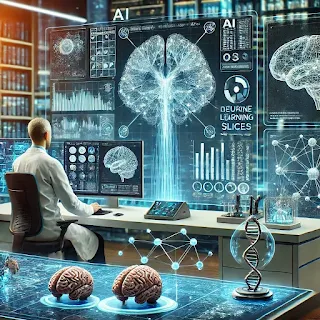Revolutionizing Neuroscience: How AI-Powered Bell Jar is Transforming Brain Mapping
Understanding the complexities of brain connectivity is a fundamental challenge in neuroscience. Researchers at UC Santa Cruz are harnessing the power of artificial intelligence (AI) to streamline brain function analysis, particularly in aligning delicate mouse brain tissue slices with reference atlases. This breakthrough, led by Alec Soronow, has resulted in the creation of Bell Jar, an innovative tool designed to enhance neuroanatomy research and significantly reduce manual workload.
The Birth of Bell Jar: AI Meets Neuroscience
Bell Jar was developed by Alec Soronow during his time as an undergraduate in the lab of Euiseok Kim, an assistant professor of molecular, cell, and developmental biology at UC Santa Cruz. Recognizing the inefficiencies of traditional methods, Soronow leveraged AI to build a tool that optimizes brain tissue alignment and improves accuracy in neuroanatomy studies.
Soronow named the software Bell Jar after Sylvia Plath’s novel, reflecting both his intellectual journey and the project’s focus on mental processes. The tool was recently introduced to the scientific community through an article in eNeuro, a leading open-access neuroscience journal.
Bridging the Gap in Neuroanatomy Analysis
For years, neuroscientists faced limitations with existing tools, many of which were developed in MATLAB or other outdated software. These tools often lacked flexibility, struggled with machine learning integration, and required extensive manual input.
Bell Jar addresses these challenges by:
Utilizing Machine Learning (ML): Enhances accuracy in detecting and matching neurons across sections.
Increasing Efficiency: Reduces subjectivity and speeds up data processing.
Open-Source Accessibility: Available on Soronow’s GitHub, allowing researchers worldwide to customize and improve it.
Revolutionizing Brain Mapping Efficiency
Traditional brain mapping is a painstaking process. Researchers analyze over 100 thin brain slices per experiment, meticulously aligning and comparing each to reference atlases. Training students for this work is equally time-consuming, requiring extensive neuroanatomy expertise.
Bell Jar significantly reduces these burdens by automating alignment and neuron detection. According to Soronow, the tool saves approximately three weeks of manual labor per brain sample, allowing for more efficient data processing and quicker experimental adjustments.
Personal Motivation: A Passion for Brain Science
Soronow’s inspiration for Bell Jar is deeply personal. His grandmother suffered from dementia, sparking his early curiosity about brain function and neurological disorders. His passion led him to study biomolecular engineering and bioinformatics, eventually winning the Dean’s Award from the Baskin School of Engineering in 2022.
After completing his M.S. in molecular, cell, and developmental biology in 2024, Soronow founded PlusTen Intelligence, a startup focused on integrating AI and engineered neuron-like cells for advanced molecular sensing applications. His interdisciplinary expertise in genetics, software design, and neuroengineering continues to drive innovation in neuroscience.
A New Era in Neuroscientific Research
Bell Jar exemplifies the synergy between AI and neuroscience, empowering researchers to explore brain connectivity with unprecedented efficiency. As Kim highlights, the tool allows scientists to focus on the bigger picture: understanding how neural circuits influence behavior, perception, and cognition.
With Bell Jar now openly available, the future of neuroscience looks more promising than ever. AI-driven tools like this will continue to push the boundaries of research, unlocking deeper insights into brain function and neurological disorders.

